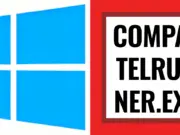If are you on the lookout for the best Google Chromecast alternative? Then you are in luck. In this review, you will read about some of the best alternatives to Chromecast.
The Google Chromecast is one of the best options for streaming wireless between devices.
The simple reason is that it is a Google product with a Wi-Fi signal. We were surprised to learn that though some users are thoroughly happy using alternatives, they still have the Chromecast connected to their television.
Well, when you can play videos from YouTube using your Google Home Mini, through voice-enabled, it is an excellent accessory to own and has at home.
The Chromecast is suitable for streaming you with optimum entertainment channels at home, office, conferences, and meetings.
It can also be used to share tutorials over the internet with your students. The problem lies in only relying on it for wireless streaming today. Now might be an excellent opportunity for you to upgrade your system.
That is because you have several better options for that. We have researched and come up with a few alternatives for the Google Chromecast. We felt they deserved to be on our list of the nine best alternatives for you.
So, we have chosen some worthy alternatives for you to read and decide when you want them. Our research came up with the Amazon Fire TV 4K and the Nvidia Shield TV for their wireless functionality and compact design.
What is the need to use a Chromecast alternative?
Before we move into the alternative list, it is worth knowing why you need an alternative in the first place. As we already have said in the beginning, Google Chromecast is one of the best accessories developed by the search engine giant.
However, many users felt the lack of a simple user interface. Not all users are experts in using Chromecast or similar technology. Since this deals with entertainment, the masses belong to all ages.
Even a few experts felt it was slightly too much for them to handle. Hence, the popularity slides down. Using your smartphone or tablet to get apps like HBO, Netflix, and others would be best.
The issue here is that not many third-party apps support Chromecast. When you choose other options, here are some of the best suggestions we have listed for you in 2023.
Let us check them out!
Best Chromecast Alternative – Our Top Picks👌
1. Amazon Fire TV 4K
The Amazon Fire TV 4K is ranked first on our list of the best Google Chromecast alternatives. Once you are done reading the description, you will find out.
The Amazon Fire TV is no stranger to the entertainment industry and has been around for quite a while.
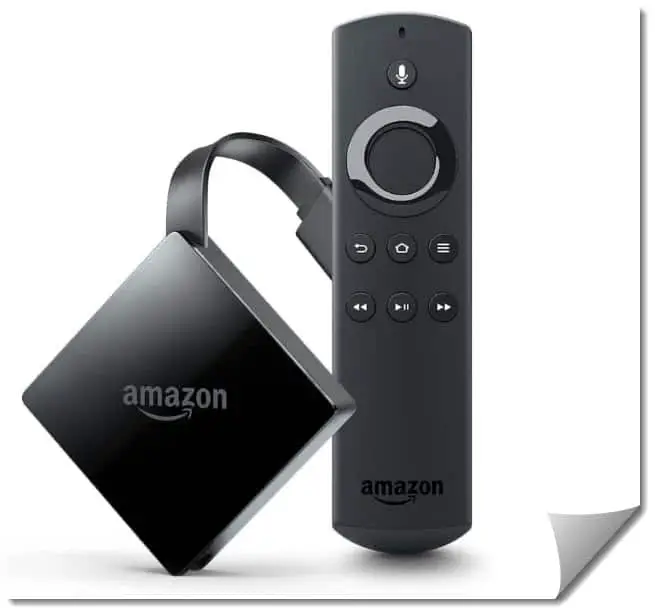
Millions of users worldwide have applauded it because it is simple to use and has powerful features for users of all ages. Even your grandparents can get the hang of it if you teach them how to use it once.
When you plug it into your smart TV, you feel the buzz around you. Some users thought they had been transported to another world with the Fire TV 4K. You can control the television using your voice.
You will have to plug it into the HDMI port of your smart TV and watch the difference. You are instantly in action when you use Amazon Prime Video. However, it also works wonderfully well with other streaming apps.
As Amazon products support their products and services, you are covered. Some popular apps like Netflix, HBO GO, Hulu, and others can be downloaded and used. This way, you can easily watch your favorite media.
This is where Google Chromecast is flawed and exposed. As we mentioned earlier, you will need to use your smartphone. Instead, the Fire TV 4K comes with its interface, and moving around your favorite movies, shows, and kids’ program is a breeze.
Listening to your favorite actors in Dolby ATMOS and HDR audio is a lifetime experience. The clarity in the voice and action is impeccable. This goes for those of you who have always wanted your home theatre.
Compared to the Fire TV Stick, the Fire TV 4K comes with a new and powerful quad-core processor. Another point we want to mention is the ability to browse through social media sites.
It has a remote control allows you to search for what you want through Alexa. It is simple and almost necessary. There is no backlighting feature on the remote control, and if you often misplace it, you need to do something about it.
The only flaw in the Fire TV 4K is the lack of support from Google services. When you heavily rely on Google for your entertainment services, then you, for sure, are going to be disappointed. Of course, the voice-controlled Alexa is right here.
Pros:-
- The Fire TV 4K has a simple user interface that enables you to move around effortlessly.
- Using an Amazon Prime subscriber, you are entitled to several free pieces of content to view during your free time.
- This product comes with its store but is not as diverse as Google.
- There is 4K streaming, and the audio mode is just exceptional.
- Users can control the navigation using their voices.
Cons:-
- Sadly, it comes with no app for YouTube.
- Using the remote control, the power and volume cannot be controlled.
The Amazon Fire TV 4K is one of a kind, and one can say that it is the best product developed by Amazon. It comes with its store, connected through voice command, and a powerful Dolby sound effect, for those action movies.
2. Roku Streaming Stick+
The Roku Streaming Stick+ is ranked second on our list of the Google Chromecast alternative.
Roku is known for producing some of the best gadgets, and with Streaming Stick Plus, they have validated their stance in this industry.
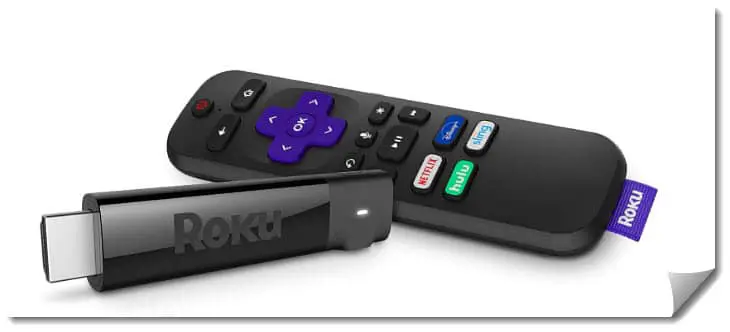
This streaming device can give the Chromecast run for the money. Let us find out why. This product supports 4K HDR streaming, like Amazon Fire TV 4K. All you need to do is plug it into the HDMI port found on your smart TV.
How the content is delivered is one of the ways that this device outperforms Chromecast. Probably, you can say it is way better than Amazon Fire TV 4K because it comes with your interface, and you do not need your smartphone.
This is operated using a remote control. In a sense, both the Amazon Fire TV 4K remote (you cannot control your smart TV) and Chromecast (do not come with a remote).
Unlike them, the remote can power the volume and your smart television.
It only means you can do all you want using a single remote. Music lovers will be delighted to know that this device supports Dolby ATMOS surround sound. Whether your system is a home theatre system or not, it comes supported.
Below is the summary of the main Pros and Cons of the Roku Streaming Stick+ that make it add to the Best Chromecast Alternative list.
Pros:-
- You can use this product and easily navigate through your favorite channels.
- The user interface is excellent and straightforward.
- All major streaming services are supported on the streaming stick +.
- You can make use of content that is free.
- Users can control both the power and control of their smart TV.
- There is Dolby ATMOS surround sound system that offers you quality audio.
Cons:-
- Unfortunately, it comes with no voice control support.
- The device becomes sluggish a few times.
The Roku Streaming Stick+ is powerful and has ample functions for you to work with. Its audio system powers are good enough, and it is way better than Google Chromecast.
3. Amazon Fire TV Cube
The Amazon Fire TV Cube is third on our list and the second product of Amazon we have listed as an alternative to Google Chromecast.
It comes with a hands-free streaming media player. Probably, it is the first device to do so with Alexa.
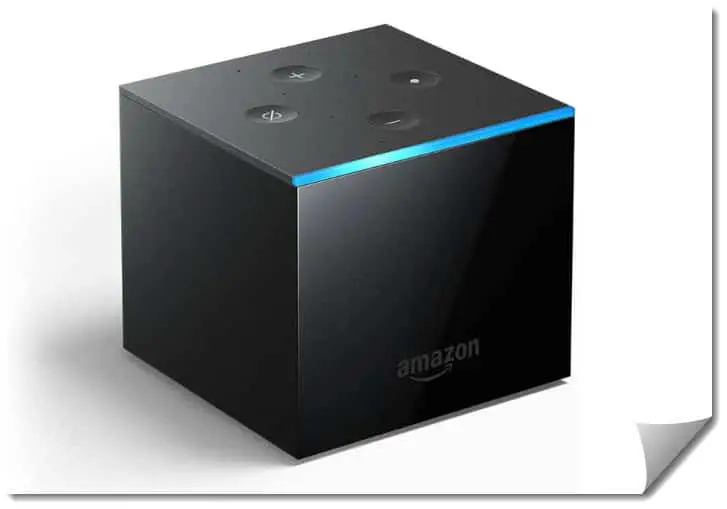
Since you are using voice command, Alexa, you can provide an all-in-one entertainment experience. All you need to do is request Alexa to do what you want to watch or do.
For example, your favorite movie, your favorite serial, or you want to turn on the lights or dim them.
Some other features of this fantastic product include eight microphones, far-field voice recognition, and powerful technology, and you can be heard from anywhere inside your home.
With hands-free voice control, you can play, fast forward, search, pause, and perform a barrage of functions. Not to mention, you can control the volume and power of the smart TV.
You can also change to satellite or live cable, depending on your requirement. The Fire TV Cube has a built-in speaker; you can find the weather conditions, find the news, control your compatible home devices, and so on.
The best part is that all these can be performed with your smart TV switched off. This is the device to own when you want to watch a real-life experience and feel it in your living room or bedroom.
The sound and picture quality is fantastic. You are provided with 4K Ultra HD up to 60 fps, audio of Dolby Atmos, and HDR. You can watch movies, shows, and episodes from popular apps like Hulu, Netflix, Prime Video, HBO, NBC, and others.
You can also watch your favorite programs on YouTube and Reddit and access Facebook on your browser. You can watch popular movies and shows if you are an Amazon Prime member.
You can also use the Amazon Music service for $3.99/month and listen to millions of songs regularly if you are a music buff. This is an exciting product with the ability to remember your commands and perform them the next time you want to watch them, listen to them, and do them.
Below is the summary of the main Pros and Cons of the Amazon Fire TV Cube that make it add to the Best Chromecast Alternative list.
Pros:-
- The device gives you the ability to remember your voice command.
- It can listen to Alexa integration commands.
- You can now control your entire entertainment power with the remote.
- You can also change your connection in one go.
- Using Amazon Prime, you can now access tons of free content.
- The device supports 4K, Dolby ATMOS audio, and HDR 10.
Cons:-
- The product does not offer YouTube.
The Amazon Fire TV Cube is the best alternative to Google Chromecast and has many features that help you enjoy your entertainment experience. When you want an enhanced user experience, then this is the product you should order and get.
4. Apple TV 4K
The Apple TV 4K is a product of Apple. Now Apple products generally do not need any introduction. Most of them are very powerful, reliable, and durable.
They come with all the features that you will, more often than not, require.
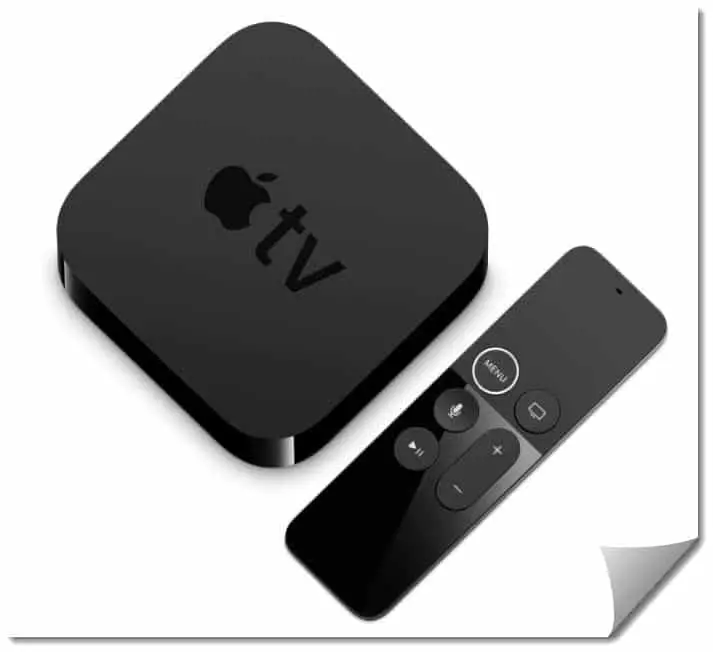
Their engineers seem to relate with their customer service department and tend to produce products that relate much to the delight of the consumers. The same can be said about the Apple TV 4K.
The main feature of this device is that the iPad Pro A10X fusion chipset powers it. You are getting a powerful device that is extremely fast and quick at what it does. It is also powerful for you to play games based on iOS.
Another noteworthy feature of the Apple TV 4K is the 32/64 GB storage space that is built-in. You can download and store movies and shows on the device. As of now, the technology giant has partnerships with several studios.
That means you can purchase Blu-ray movies cheaply compared to other app stores. If you use Apple products, you would know by now that their interface is easy to use.
Using Siri, you can now easily find what you want. Some users found the remote a little fidgety to use. But, it is excellent as you tend to get used to high-quality products. You can directly cast the photos and videos from the iOS devices on your Apple TV 4K.
The best part about this product is that you do not have throttled in the ecosystem. It can work on other networks. This smart TV supports all the popular streaming services, and you can play it on 4K HDR and Dolby Vision.
When you want to use the Apple Arcade, you might want to use it for your entire home. But, when other family members use different devices, you may not find this useful.
Pros:-
- The Apple TV 4K can support 4K, HDR, and Dolby Vision.
- The A10x fusion chipset is quite efficient and quick.
- Users have felt that this is fast when compared to the platforms.
- Siri can efficiently work on all streaming services, not the same ecosystem.
- You can also make use of the games that are present on it.
Cons:-
- Unfortunately, it is quite expensive.
- Few users felt that the remote is sort of difficult to handle.
The Apple TV 4K is probably the best alternative for Google Chromecast. It comes with compelling features and an efficient system. You will find it quickly too. Not to mention, you do not have to be glued to the same ecosystem for once.
5. Roku Ultra
The Roku Ultra is fifth on our list and the second of the Roku products we are looking at. Using this device, you can now use the Apple TV and New Disney as they are streaming on Roku products.
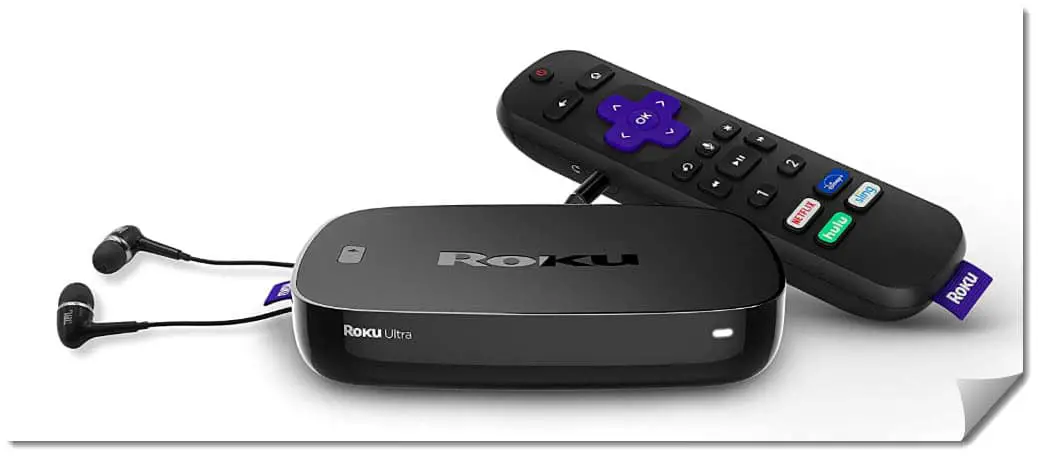
The device allows you to stream live and free content on your smart TV using the internet. The media player and the new powerful quad-core processor are suitable for 4K, HD, and HDR. Roku provides you with the best connectivity.
It comes with dual-band wireless for wired streaming and excellent visuals. You can now watch all your favorite channels on 4K, HD, and HDR streaming. With the voice command, you can now control what you want to watch and see with the one-touch control.
It is a flexible device that offers instant results on Apple TV, Disney, Prime Video, Netflix, and Google Play. You can now watch television for free. They include shows, sports, movies, and others.
There is also the Roku mobile app that is free to use. You can now make your iOS or Android device control your media player. You can now watch all your favorite programs on both operating systems or iOS and Android.
The best part about Roku is that the software is updated automatically. The Roku Ultra is more powerful than other devices launched by Roku.
You will also like that it has an ethernet port for constantly streaming 4K content.
Pros:-
- You can now easily find your way into the interface.
- All the streaming services are supported using this device.
- You can make use of the free content that is present to consume.
- The remote can control both the power and volume of the television.
- The device offers you Dolby ATMOS surround sound.
- You can use the headphone jack to watch TV without making noise.
Cons:-
- There is no support for voice control.
The Roku Ultra is more powerful than the Roku Streaming Stick + and has more features. It is overall a better product.
6. Nvidia Shield TV
The Nvidia Shield TV is sixth on our list and is the most popular today. If you like gaming, you prefer to use the Nvidia Shield TV.
You can cast games from your PC to your TV. This powerful device can easily handle your TV and gaming requirements.
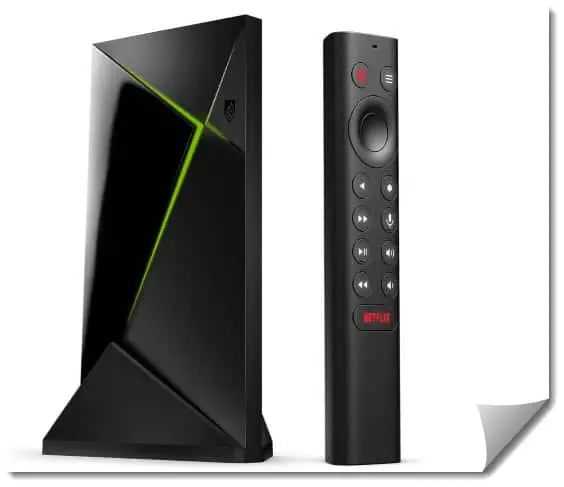
This device operates using the new NVIDIA Tegra X1+ chip that provides a clear and ideal image of your favorite movies or shows you are viewing. Not your mention, your gaming sessions are also enhanced.
It comes with Dolby’s vision – Atmos, that makes what you are watching alive. This immensely enhances your entertainment experience. Users have complimented their looks too. This is the ideal centerpiece and does not require more storage space.
You can use dual-band AC Wi-Fi, Bluetooth 5.0, and Gigabit Ethernet. You would also prefer using this remote when compared to others available.
It is advanced as it comes with backlit buttons, can get activated on motion, and has a menu button that can be customized.
Other features include Bluetooth, voice control, IR control for your TV, and remote control locator. It provides unlimited entertainment with the 4K HDR content streaming media player for many apps and games, including YouTube, Prime Video, Netflix, and so on.
Finally, it comes with voice control. Using Google Assistant, you can view weather news, photos, live camera feeds, sports scores, and more. You can do these functions by using Alexa and Echo.
Below is the summary of the main Pros and Cons of the Nvidia Shield TV that make it add to the Best Chromecast Alternative list.
Pros:-
- It supports 4K HDR with Dolby ATMOS.
- It also allows you to cast photos and movies from your PC to your TV.
- There is Nvidia support through GameStream.
- You can also make use of the Dolby sound system.
- Some features include IR control for your TV, Bluetooth, and voice control.
Cons:-
- It is quite expensive.
- You have to purchase the controller separately.
The Nvidia Shield TV is the ultimate alternative for Chromecast for the best experience in entertainment. You would be delighted to know that it can work and perform better than Chromecast.
7. AirTame – Chromecast cheap alternative
The AirTame While is placed seventh on our list, and we would be quite honest with you. Some users felt that this product does not compete with Google Chromecast. But we will feel otherwise.
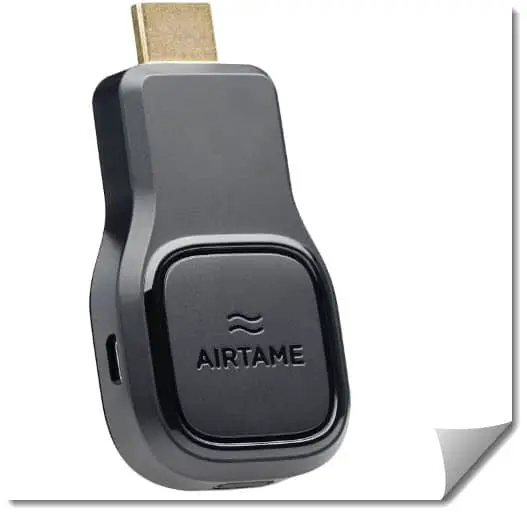
Like Chromecast, you can cast your movies and images on your TV from your smartphone. Those of you in the educational field will find this feature quite useful. You can also work on a wide range of Android and iOS.
You can use your devices on the TV for presentations. This is helpful during meetings and conferences using mobile apps. You can also use the stick for streaming to multiple screens. They can be viewed on HD 1080p video.
It is designed such that you can use it for business, and it supports features that other wireless HDMI adapters cannot. Some of them include WPA2 Enterprise, Ethernet connection, connection with IP, and access point mode.
Users can easily set up the stick. It does not take too much time. All you need to do is plug the rod into your HDMI port and connect to a Wi-Fi network using the app. There is also a cloud-based device management tool that helps you to monitor devices remotely.
Pros:-
- You can cast images and videos directly from your smartphone, PC, and other devices.
- This is ideal for giving presentations.
- You can stream to multiple screens.
- The visuals are HD 1080p videos.
- It supports features that other HDMI adapters do not.
Cons:-
- This is an expensive device.
- It is not suitable for media consumption.
AirTame is an ideal alternative as it has decent features and supports casting images and videos on your TV from Android and iOS. Though Chromecast is exciting and fun, this is worth a try.
8. Xiaomi Mi Box S
The Xiaomi Mi Box S is a product of the Xiaomi model. To be frank, we do not want to claim that this is the best alternative for Chromecast. But we found it quite exciting and exciting. Perhaps, you may share your thoughts.
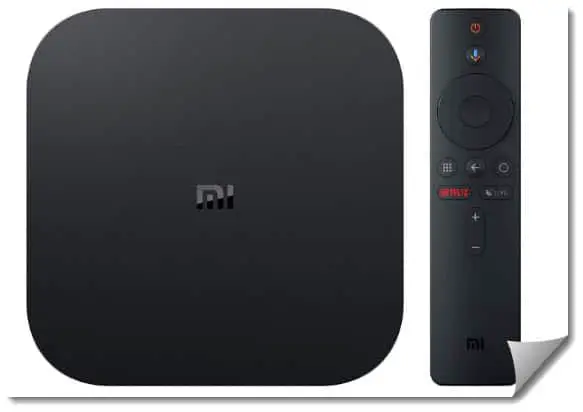
The main aspect of this product is that it is easy to set up. It has a simple concept of working, 4K, HDR resolution, Dolby and DTS audio system, a TV Box, and an Android TV operating system.
The remote control operates with the Google voice assistant, and you can control all the contents you want. Users can install the applications they want using the internal storage of 8GB.
This comes with a dual-band Wi-Fi AC module that helps you to connect the TV Box. When you want to use remote control using Bluetooth, you can do so thanks to Bluetooth 4.2. There is also a USB 2.0 port, HDMI 2.0A port, and a 3.5 mm audio output.
Below is the summary of the main Pros and Cons of the Xiaomi Mi Box that make it add to the Best Chromecast Alternative list.
Pros:-
- This stick has a dual-band Wi-Fi AC module to connect to the TV Box.
- Users can connect using Bluetooth with Bluetooth 4.2.
- It also has a USB 2.0 port, HDMI 2.0A port, and a 3.5 mm audio output.
- It is easy to set up.
- It comes with 4K, HDR resolution, Dolby and DTS audio system, a TV Box, and with Android TV operating system.
- You can control all the contents you want using the Google voice assistant.
- You can install the applications they want using the internal storage of 8GB.
Cons:-
- It is not a very reliable product. But you never know.
The Xiaomi Mi Box S is a worthy competitor for Google Chromecast. It has all the features you need to operate and use your HD TV in 4K.
📗 FAQs on Best Chromecast Alternative
Below are a few queries on Best Chromecast Alternative that everyone is expecting to answer, and I did include the same for my readers.
The FAQs listed here in our post are about Google Chromecast. Since we have discussed and seen the alternative, we must also know a few pointers on Chromecast.
Is Chromecast obsolete?
The Chromecast (third generation) that debuted in 2019 was officially discontinued after the launch of Chromecast with Google TV (HD).
Google said that even though Chromecast is not manufactured, it would still easily cast content.
Is Miracast same as Chromecast?
Miracast is a wireless HDMI connection. It’s a part of modern wireless devices that mirrors one screen to another. Like Chromecast, Miracast isn’t an individual device.
What is the difference between casting and mirroring?
Mirroring connects two devices via a wireless connection or cable. It allows you to play the content on your computer screen to other devices like a projector or TV.
On the other hand, casting sends online content from digital devices via a wireless connection to a projector, TV, or monitor.
However, you can still use your primary device for other tasks with casting, which is not possible with screen mirroring.
Is there a monthly fee for using Chromecast?
No, you don’t need to pay any monthly fee for using the Chromecast device after purchase.
Only you need to pay monthly or annual subscription charges for paid streaming apps, such as Amazon Prime and Netflix.
Which is better, Chromecast or fire stick?
Even though Chromecast and Fire Stick have similar features, Chromecast is still a better option in terms of services.
Chromecast attracts many developers; thus, you will find many supportive apps. But Firestick is compatible with only Amazon’s ecosystem.
Which is better Roku or Chromecast?
The way they interact with your TV is one important distinction. You can stream entertainment from your phone, tablet, or computer to your TV using Chromecast, a gadget that fits into the HDMI socket on your TV.
On the other hand, the standalone Roku device connects to your TV and has a unique user interface and remote.
This implies that although Chromecast requires you to utilize your phone or another device to control your streaming experience, Roku does not require you to do so.
The breadth of the offered content is another distinction. Many well-known streaming services like Netflix, Hulu, and Amazon Prime Video are among the many channels and apps that are available on Roku. Despite having a limited overall selection, Chromecast can stream numerous well-known services.
Roku could be a better option if you want a standalone streaming device with a simple interface and various content.
Chromecast may be a good choice if you want a more budget-friendly solution that lets you utilize your phone or computer as the main interface for managing your streaming experience.
Is there a Chromecast alternative?
Yes, there are a variety of Chromecast substitutes out there. Several well-liked choices include:
Amazon Fire Stick:– Netflix, Amazon Prime Video, and Hulu are just a few of the well-known streaming services that you can access with the Amazon Fire Stick. You can also access a broad variety of other material from these services.
Roku: A variety of streaming services, such as Netflix, Hulu, and Amazon Prime Video, are available through this device. Additionally, it offers a wide range of channels, including sports and live TV.
Apple TV: This streaming device provides access to a variety of streaming services, including Apple TV+, the company’s own streaming service. A wide variety of apps and games are also available.
Android TV:- A version of the Android operating system specifically made for TV use is known as Android TV. It provides access to numerous apps and streaming services, such as Netflix, Hulu, and Amazon Prime Video.
Smart TVs:- Many more recent TV models come equipped with smart capabilities that let you stream video from well-known streaming services without the use of an additional device.
Is there a cheaper alternative to Chromecast?
You have a number of less expensive Chromecast substitutes to pick from.
Several alternatives are:-
Roku Streaming Stick:- You may stream content from your phone or tablet to your TV with the Roku Streaming Stick, a gadget that is comparable to Chromecast. Additionally, it has a remote control and access to numerous streaming services.
HDMI streaming dongles:– Similar to Chromecast, various HDMI streaming dongles are also readily available and let you stream media from your phone or tablet to your TV. These dongles are typically quite affordable and widely accessible.
Is Miracast better than Chromecast?
If you want to stream media from a device that doesn’t already support Chromecast or if you want to broadcast media via a direct wireless connection, Miracast is an excellent option.
Chromecast is a wonderful option if you want to stream material from the internet or a variety of other devices and apps.
Which casting device is best?
There are several casting tools on the market, and which one is best for you will depend on your individual requirements and tastes.
The Google Chromecast, Amazon Fire Stick, and Roku Streaming Stick are a few of the well-liked choices.
What are the disadvantages of Chromecast?
There are a few disadvantages to using Chromecast:-
Limited app support: Chromecast only works with a select few apps and streaming services, so you might not have access to all of your favorite media.
Uses a different device: In order to stream content and control Chromecast, you need a different device, like a phone or tablet. If you don’t have a suitable device handy, this can be a hassle.
You must have an internet connection in order to utilize Chromecast because it does not support offline playback.
Limited customization: Compared to other streaming devices, Chromecast does not give as much flexibility in terms of adding third-party apps or changing the user interface.
Limited audio support: Apple Music, for example, does not employ audio formats that Chromecast can play.
No built-in streaming services: Since Chromecast lacks built-in streaming capabilities, you must use a third-party service to access video.
Possibility security issues: There is the potential for security vulnerabilities with any internet-connected gadget. To reduce any potential hazards, it’s critical to maintain the most recent version of the Chromecast software.
What is a TV buddy?
A gadget called a TV buddy is made specifically to be used with a television. It often features a small screen and is designed to serve as a second screen, enabling users to engage with their TV in a more engaging and private manner.
TV buddy may be used to play games, stream video content, and access several other services and programs. Smart TVs, streaming devices, and set-top boxes are a few examples of TV companions.
Can Roku replace Chromecast?
You can definitely use a Roku device in place of a Chromecast. Users can broadcast online video material to their TVs using both Chromecast and Roku devices. Nevertheless, there are some distinctions between the two.
One of the primary distinctions between Chromecast and Roku is that Chromecast uses a different device, such a smartphone or tablet, to act as a remote control and stream video to the TV. In contrast, Roku devices feature their own integrated user interface and remote control, allowing for independent use.
Another distinction is that Roku offers a considerably greater variety of apps and channels than Chromecast, which only supports a small number of apps and services.
As a result, if you own a Roku device, you might have access to more streaming content alternatives than you would with a Chromecast.
Do I need a Chromecast If I have a smart TV?
Using a Chromecast, you may send video and music from your phone, tablet, or computer to your TV. You might not require a Chromecast if your television is a “smart TV” with built-in capability for streaming media from the internet.
A Chromecast can nevertheless be helpful in the following circumstances:-
1. The streaming service you want to use does not already come embedded into your smart TV (e.g. Netflix, Hulu, etc.)
2. You want to be able to connect your phone or tablet wirelessly to your TV so that you can stream material from them.
3. Without using cables, you want to be able to stream material from your computer to your TV.
4. You need to be able to operate your TV with the help of your phone.
In conclusion, the use of a Chromecast and your individual demands will determine if you need one. If your smart TV can handle all of your streaming requirements and you don’t mind using a different remote control, you might not need a Chromecast.
A Chromecast can be a great addition to your home entertainment system, though, if you’re looking for extra convenience and versatility.
What is the best way to cast from phone to TV?
Depending on which precise devices you’re utilizing and the kind of content you wish to cast, there are numerous ways to cast from a phone to a TV.
Some typical choices are as follows:
Chromecast: You can cast content from compatible apps using the Google Home app on your phone if your TV has a built-in Chromecast or if you have a Chromecast device connected to your TV (such as YouTube, Netflix, and Hulu).
Smart TV: If your TV has streaming apps and built-in WiFi, you might be able to cast material directly to the TV utilizing the casting feature of the app (if available).
HDMI cable: If your TV and phone both have HDMI ports, you can use an HDMI cable to link the two electronics and display the screen from your phone on the TV.
Wireless display adapter:- Utilizing the Miracast technology, a wireless display adapter (like the Google Chromecast or Amazon Fire Stick) enables you to wirelessly connect your phone to your TV.
Bluetooth: If your TV is Bluetooth-enabled, you might be able to stream audio and video from your phone to the TV that way.
Is Miracast still being used?
In fact, Miracast is still in use. You can stream video and music from one device to another using the wireless display standard known as Miracast. Numerous devices, such as computers, tablets, and smartphones, support it.
Both the sending and receiving devices must be capable of using Miracast. When a TV, monitor, or projector has a compatible Miracast receiver, you can use Miracast to stream video from your device to those devices.
What is the best free app to cast from phone to TV?
There are a few different apps that you may use to cast free content from your phone to your TV.
Several well-liked choices include:
Google Chromecast is an app that lets you cast entertainment from your phone to your TV using a Chromecast device. It is available for both Android and iOS devices.
AllCast:- With the help of the Android app AllCast, you can stream entertainment from your phone to your TV via a number of different gadgets, such as Chromecast, Apple TV, Amazon Fire TV, and more.
LocalCast:– You can cast content from your phone to your TV using a variety of different devices, such as Chromecast, Apple TV, Amazon Fire TV, and more, using the Android software called LocalCast.
AirScreen:– With the help of the Android and iOS app AirScreen, you can project entertainment from your phone to your TV via a number of different gadgets, such as Chromecast, Apple TV, Amazon Fire TV, and more.
What is the easiest streaming device to use?
The Amazon Fire Stick, Google Chromecast, and Roku Streaming Stick are a few well-known streaming gadgets that are generally simple to use.
With the aid of these gadgets, you can stream media to your TV directly from a number of apps, like Netflix, Hulu, and Amazon Prime Video. You’ll need a WiFi connection in addition to a TV with an HDMI connector to utilize them.
Simply connect the streaming device to your WiFi network, plug it into your TV, and follow the setup instructions that appear on the screen.
After setting it up, you’ll be able to quickly and easily access a variety of streaming entertainment.
Which is better mirroring or casting?
Casting works best for solitary use and private viewing of movies or TV shows, whereas mirroring works better in presentations and group settings. Whichever is preferable will depend on the particular use scenario, though.
Is Roku the same as Chromecast?
The way the gadgets connect to your TV is one of the main differences. Using the Google Chromecast software, Chromecast is a little dongle that you can insert into your TV’s HDMI port to stream entertainment from your phone, tablet, or computer to your TV.
In contrast, Roku is a stand-alone device that you can connect to your TV with an HDMI connection to access a variety of streaming services including Netflix, Hulu, and Amazon Prime Video.
The method of device control is another distinction. Roku has its own remote control, but Chromecast uses the one from your phone, tablet, or computer.
Does Chromecast use a lot of Wi-Fi?
Wi-Fi is seldom ever used by Chromecast devices. Actually, the device conducting the casting uses the most Wi-Fi when you cast material from your phone, tablet, or laptop.
Simply receiving the data and transmitting it to your TV is all that the Chromecast device does. You shouldn’t notice any difference in how much Wi-Fi your devices are using when you are casting content as long as you have a robust Wi-Fi connection.
Can Chromecast be hacked?
A Chromecast could be compromised, just like any other gadget that is online. By employing certain straightforward security best practices, the likelihood of this happening can be reduced.
Here are some pointers for keeping your Chromecast safe:-
1. For your home Wi-Fi network, choose a strong, one-of-a-kind password.
2. Keep the most recent security updates installed on your network and Chromecast.
3. Utilize the Chromecast app’s most recent version.
4. With your Chromecast, stay away from public WiFi networks.
5. On your Google account, enable two-factor authentication.
Is Firestick better or Chromecast?
When selecting which option is better for you, take into account the following:
Compatibility: Because a Firestick is made expressly to operate with Amazon services, it may be a better option if you have a lot of Amazon material (such as movies or TV series from Amazon Prime).
On the other hand, a Chromecast might be a better option if you utilize Google services like YouTube or Google Play Movies & TV because of how well it connects with those platforms.
Remote control: The Chromecast does not have a remote control, however the Firestick does. Instead, you use your phone or tablet as the Chromecast’s remote control. This may be practical, but it also necessitates having a device on hand to operate the Chromecast.
Voice control: Voice control is supported by both the Firestick and Chromecast, however the Firestick’s voice control features are more sophisticated. You can use voice commands to search for content and operate the Firestick without typing thanks to the built-in microphone on the remote control.
With the Chromecast, voice commands must be entered into a different device (such a phone or smart speaker).
Which casting device is best?
Here are the five best casting devices that you can consider purchasing:
- Roku Streaming Stick+
- Nvidia Shield TV (2019)
- Amazon Fire TV Stick 4K
- Apple TV 4K
- Roku Ultra
Is Google Chromecast worth buying?
Google Chromecast is worth getting. You will be surprised that Chromecast Ultra is the best in Chromecast. However, it is not the latest. The Google Chromecast can quickly provide you with 4K HDR streaming.
You might want to consider it if somebody often views 4K HD. It is much more powerful than 1080p. That is because it only comes with streaming and instant startup and streaming.
Do you need a Chromecast?
As surprising as it sounds, Google Chromecast is popular among millions of users. It is easy to set up. To make your Chromecast work efficiently, you must plug it inside the HDMI.
It works when you have plugged it into your display and connected it to a power supply. However, you will want to know that the connected PC or device should have a similar network.
Can you travel with a Chromecast?
Yes, you can travel with your Google Chromecast. It comes small in size. Those of you who frequently travel can consider using it. But, when you need to know that Chromecast does not support browser-based logins.
If your network works on browser logins, you must consider using it. Though you may not be able to use it in hotels or universities, you can catch hold of a Wi-Fi network and be good to go.
Is there an alternative to Chromecast?
Yes, we have listed them in the above guide. We found the Amazon Fire TV 4K and Nvidia Shield TV useful users. That is because they come with all the required features for matching with the Google Chromecast.
Apart from that, they are easy to set up and use. You will also be delighted to use the Samsung AllShare Cast too. Like the Amazon Fire TV, it comes in a box. However, this does not come with remote control and needs a Samsung tablet or smartphone for control.
Is the alternative for Google Chromecast worth your time and money?
The alternative for Google Chromecast is worth your time and money. Matching something that is a product of Google can be strenuous and tough. However, the above products have proved their capabilities.
If you have decided to use these alternatives, you might want to go for them. Some of them, like the Amazon Fire TV 4K and Nvidia Shield TV, come with powerful features that are good, if not better than the Google Chromecast.
On the whole
We come to the end of our list. We hope our list could be useful for your search for a Google Chromecast alternative. This way, you can now stream your favorite and popular media options on your television.
We highly recommend you use the Amazon Fire TV 4K and Nvidia Shield TV. These two options were quite good and stable based on our research. As we have mentioned, our list was compiled only after a careful analysis.
So, you know that you are not dealing with some random alternative. We bet these are the most popularly used by millions of users globally.
However, your opinions may defer. We encourage you to spend time in your research for the best Google Chromecast alternative, and do let us know if you found something better for all your home entertainment needs.
We would be delighted to hear from you in our comment section. The alternatives are easy to use, simple to install and live up to the hype generated. You can also consider the Apple TV 4K if you are not locked in a single ecosystem.
Apple products are always as smooth as butter and efficient. Android users can consider other options like the Nvidia Shield TV. In the end, it is a personal option. Depending on your taste and preference, you may do so.
Why the delay?
Hurry up and place the order before they disappear.














